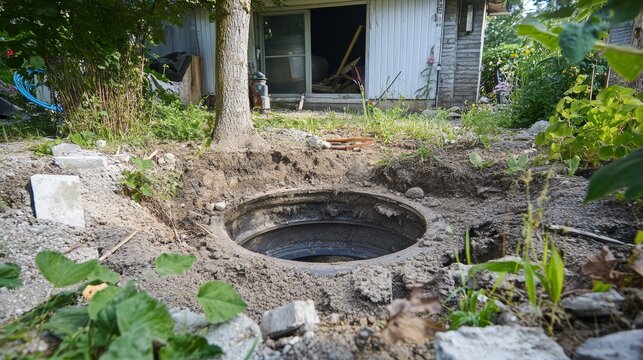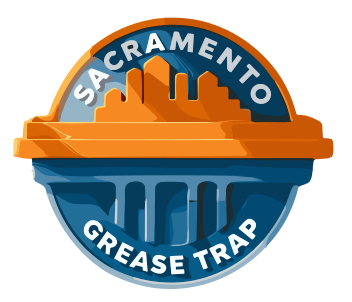Mastering the 25% Rule in Sacramento: How to Keep Your Grease Trap Compliant and Efficient

Have you ever wondered why your local health inspector keeps emphasizing the “25% rule” for grease traps? Or maybe you’ve faced fines and confusion around keeping your commercial kitchen grease trap compliant. If that sounds familiar, you’re not alone. Managing a grease trap can feel tricky, but understanding this key rule could save you time, money, and headaches.
In this post, we’re diving into what the 25% rule really means for Sacramento food establishments like yours. You’ll get a clear, no-jargon explanation of the rule, why it matters, and how you can use it to keep your grease interceptor running smoothly and within regulations.
Whether you’re a restaurant owner, a facility manager, or someone responsible for grease trap cleaning, this guide will equip you with practical insights and actionable tips. By the end, you’ll know exactly how to stay compliant, avoid common pitfalls, and maintain an efficient drainage system that protects your business and the environment.
Understanding the Origins and Basics of the 25% Rule
Before we get into the nitty-gritty, it helps to know how the 25% rule came about and why it’s such a big deal in grease trap maintenance. The rule is a standard adopted by many municipal water and health authorities—including Sacramento—to regulate the amount of fats oils and grease (FOG) that accumulate in your trap.
Put simply, the 25% rule means that once the accumulated grease reaches one-quarter of the grease trap’s total capacity, it’s time for regular cleaning. This standard helps prevent grease blockages, foul odors, and costly damage to your plumbing system.
Over the years, this rule evolved from practical experience and environmental necessity. Grease traps not only protect your kitchen’s plumbing but also prevent grease from entering the city’s sanitary sewer system, where it can cause backups and sanitary sewer overflows. Sacramento’s regulations emphasize this rule because it balances operational efficiency and environmental responsibility.
Today, the 25% rule is enforced by local health inspectors and wastewater authorities, making it essential knowledge for anyone managing a grease interceptor. Staying ahead of this requirement helps you avoid penalties and keeps your kitchen running smoothly.
Breaking Down the 25% Rule: What You Need to Know
Let’s unpack the 25% rule in everyday terms so you can confidently apply it to your grease trap cleaning routine. Think of your grease trap as a bucket designed to catch fats oils and grease (FOG) before they enter the sewer system. The 25% rule is the indicator telling you when that bucket is getting too full.
Key Components:
- Capacity Monitoring — The total capacity refers to the entire volume inside your grease trap or interceptor tank.
- Grease Accumulation Threshold — When grease, food solids, and other solids reach 25% of that volume, it triggers the cleaning requirement.
- Cleaning Frequency — Depending on your kitchen’s size and usage, this might mean weekly, biweekly, or monthly grease trap cleaning.
- Inspection and Measurement — Regularly checking grease levels using inspection ports or professional services ensures compliance.
- Record Keeping — Documenting cleanings and inspections is crucial for health inspections and audits.
Understanding these components helps you make grease trap maintenance predictable rather than reactive. For example, a busy commercial kitchen producing high volumes of FOG may need more frequent cleanings, while a smaller café might have more flexibility.
Practical Examples of the 25% Rule
- A medium-sized restaurant in Sacramento measures grease at 20% capacity during weekly checks — no cleaning needed yet, but keep monitoring closely.
- A large catering kitchen hits 30% capacity within two weeks — time to schedule immediate cleaning to stay compliant and prevent blockages.
Mastering these practical details means fewer surprises and a smoother relationship with local regulators.
Why the 25% Rule Matters: Benefits of Compliance and Efficiency
Following the 25% rule isn’t just about avoiding fines—it also brings real benefits to your operations and the environment. When you keep your grease trap within this limit, you:
- Prevent Plumbing Issues — Avoid costly clogs and back up that disrupt business.
- Reduce Health Risks — Minimize foul odors and unsanitary conditions in your kitchen.
- Stay Regulatory-Compliant — Meet Sacramento’s legal standards and pass inspections with ease.
- Protect the Environment — Stop fats oils and grease from polluting waterways and the sanitary sewer.
- Save Money Long-Term — Regular grease trap pumping and maintenance costs less than emergency repairs or fines.
Beyond these, compliance builds your reputation as a responsible business owner committed to quality and sustainability.
Challenges and Solutions When Applying the 25% Rule
Of course, no rule is without challenges, and the 25% rule is no exception. Sometimes it can feel tricky to measure grease accurately or predict cleaning schedules perfectly. That’s okay—acknowledging these hurdles is the first step to managing them effectively.
Common Challenges:
- Inconsistent Monitoring — Without regular checks, grease levels can sneak up on you.
- Misunderstanding Capacity — Confusing total trap size with effective grease volume.
- Scheduling Difficulties — Finding time for grease trap cleaning in busy kitchen operations.
- Record-Keeping Gaps — Failing to maintain proper documentation for inspections.
- Variable Grease Production — Seasonal or menu changes affect how quickly grease builds up.
Tips to Overcome Challenges:
- Establish a clear inspection schedule and stick to it.
- Train your kitchen staff on how to check grease levels properly.
- Use professional services for precise measurements and cleaning.
- Keep detailed logs accessible for audits.
- Adjust cleaning frequency based on observed grease trends.
How to Implement the 25% Rule in Your Sacramento Kitchen
Ready to take control? Here’s a straightforward approach to applying the 25% rule in your grease trap management:
- Know Your Trap’s Capacity — Check manufacturer specs or consult a professional.
- Set Up Regular Inspections — Use inspection ports to measure grease levels weekly or biweekly.
- Document Everything — Record dates, grease measurements, and cleaning actions.
- Schedule Cleanings Promptly — When you hit the 25% threshold, arrange cleaning without delay.
- Train Your Team — Make sure staff understand the rule and their roles.
- Work with Reliable Service Providers — Choose licensed grease trap cleaners familiar with Sacramento’s regulations.
- Review and Adjust — Periodically assess your process and tweak cleaning intervals as needed.
Top Tips to Keep in Mind:
- Start small with weekly checks if you’re new to the rule.
- Don’t hesitate to experiment with cleaning frequency based on your kitchen’s flow rate.
- Engage your whole team early to share responsibility.
- Celebrate maintenance wins to build momentum.
Consider tools like grease trap level monitors, cleaning service reminders, or simple spreadsheets for tracking.
The Future of Grease Trap Management in Sacramento
As regulations evolve and technology advances, grease trap management is poised for change. Staying ahead means paying attention to emerging trends that could simplify your compliance efforts.
Emerging Trends:
- Smart Monitoring Systems: Real-time grease level sensors integrated with mobile alerts.
- Automated Cleaning Services: Scheduling based on actual grease accumulation, not fixed dates.
- Stricter Environmental Standards: Increased focus on sustainability and waste reduction.
- Improved Training Programs: More accessible education for food service workers.
- Digital Record-Keeping: Cloud-based logs accessible during inspections.
These trends promise to make compliance more precise, less labor-intensive, and better for the environment.
Wrapping It Up: Your Path to Mastering the 25% Rule
Mastering Sacramento’s 25% rule is all about proactive, informed grease trap management. It’s a practical standard designed to protect your plumbing system, your business, and the environment.
Key Takeaways:
- The 25% rule means cleaning your grease trap when grease reaches a quarter of its capacity.
- Regular monitoring, documentation, and timely cleanings are essential.
- Compliance saves you money, prevents problems, and supports sustainability.
- Challenges exist but are manageable with planning and teamwork.
Ready to put this into practice? Start by scheduling your next grease trap cleaning and setting up a simple tracking system. Have questions or tips of your own? Share them in the comments — we’d love to hear how you’re mastering grease trap compliance in Sacramento!
FAQ: Common Questions About Grease Trap Compliance
Q1: How often should I schedule grease trap cleaning to stay compliant with the 25% rule?
A1: Cleaning frequency depends on your kitchen’s size and grease production but typically ranges from weekly to monthly, based on monitoring grease accumulation.
Q2: What happens if grease blocks the outlet pipe or inlet pipe?
A2: Blockages can cause backups, foul odors, and costly plumbing damage. Regular cleaning and inspections help prevent these issues.
Q3: Can passive grease traps meet Sacramento’s compliance standards?
A3: Passive grease traps may be suitable for smaller operations but larger kitchens usually require grease interceptors with proper flow rates and regular maintenance.
Q4: How do grease traps protect the sanitary sewer system?
A4: By separating grease and food solids from wastewater flows, grease traps prevent oils and grease fog from entering the sewer system and causing blockages or sanitary sewer overflows.
Q5: What role do kitchen staff play in maintaining a compliant grease trap?
A5: Staff should be trained on proper grease disposal, recognizing signs of grease buildup, and following scheduled cleaning protocols to keep the system functioning efficiently.

Let Us Simplify Your Grease Trap Maintenance.
Proper grease trap maintenance will reduce costly repairs in the future.
.avif)

